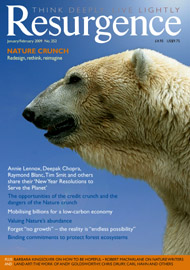IN BATU-ANGAS, A sequence of twenty-four poems, a modern poet encounters a 19th-century scientist to whom she was drawn on the basis of a shared sense of wonder at the natural world. Anne Cluysenaar lives on a small farm in Gwent, not far from the River Usk, on whose banks, in a small cottage, Alfred Russel Wallace was born in 1823. Wallace, best known as co-discoverer, with Charles Darwin, of the Theory of Evolution through natural selection, left written records of his explorations in Amazonia and the Malay Archipelago, as well as specimens of rare insects and other creatures.
Cluysenaar has, therefore, rich sources to draw on. These include Wallace’s words, and visual images relating to his discoveries, with which her book is beautifully illustrated. Batu-Angas is thus the poetic record of a relationship that the poet has formed with the scientist over a period of years, and of explorations in which, in imagination, she participates with him. It is also a book in which Cluysenaar wonders “at the tenuous job of poet”. Not wonders about, but at: the act of wonder determines the shape of this inspiring book.
With its painting of a bird of paradise on the front cover, and with numerous other striking images, the book immediately creates an exotic impression. While this corresponds to the feeling for beauty which poet and scientist share, their idea of Nature is based firmly upon a sense of reality, which includes danger: both the perils Wallace faced in his travels, and the threat now posed by humanity on the natural world to the survival of our species.
Cluysenaar is a poet aware that “deep time stretches on either side of our present existence.” In the place from which Wallace, known as the “father of biogeography”, started, she too sees life in terms of its geological and evolutionary contexts. The title of her book bears directly on this way of seeing, ‘batu-angas’ being, as Cluysenaar tells us in her Foreword, a phrase Wallace borrowed from the local language of Ternate “to describe the ‘burnt rocks’ or cooled lava he saw there”.
Language, for Cluysenaar, is a vital form of energy. Its importance might be inferred from the image springing from her reflections on the word ‘Hominid’: “a skull | whose inner surface curves | to accommodate words”. Language has played an essential part in the cultural formation of humanity, and both contains the history of human development within it and offers creative possibilities on which our survival as a species depends. As Wallace was “nature’s explorer”, so the poem seeks “that undiscovered place | words should lead into”.
Cluysenaar distinguishes between Wallace’s “driving passion”, which was “to know the causes of things”, and her passion “for life itself, as it exists before me”. It is love for life, however, that they share, and Batu-Angas celebrates. The book is rich in the experience of both poet and scientist; the love it expresses, however, is not self-centred, but embraces the existence of all living things. It takes the form of attentiveness, which may be seen, for example, when Cluysenaar shares Wallace’s discovery of a bird of paradise:
Time had reached forward through change after slow change till this came of it: feathers to be flown like standards, raised, tensioned in courtship, flailing the deep forested darkness... Wonders we can only witness when, without us, they’ve happened.
Seeing life before and after, seeing life now, but in its evolved context, marks the achievement of this book. The vision is at once material and spiritual. Cluysenaar’s previous major poetic sequence, Vaughan Variations, concerned another man of the Usk Valley: Henry Vaughan, the 17th-century metaphysical poet. Vaughan famously wrote: “There is in God (some say) | A deep, but dazzling darkness.” Cluysenaar takes up the image at the beginning of Batu-Angas, when she says, of one of Wallace’s butterflies, “the sooty texture | of immense wings | dazzles by its darkness.” For her, spirit inheres in mind and matter, and human creativity has a positive role to play in the evolutionary process:
Pulses of living matter pressing forward always. Of these, we too have come – a way for the world to witness, at last, its own transformations, human civilisations never so safe as to shut out the breath of origins moving within us.
As the poetry speaks of co-operation between mind and matter, and poetry and science, so the book, with its images and with an introduction by Charles H. Smith, the Wallace expert, is a product of creative co-operation.
All royalties from Batu-Angas are donated to WWF.







